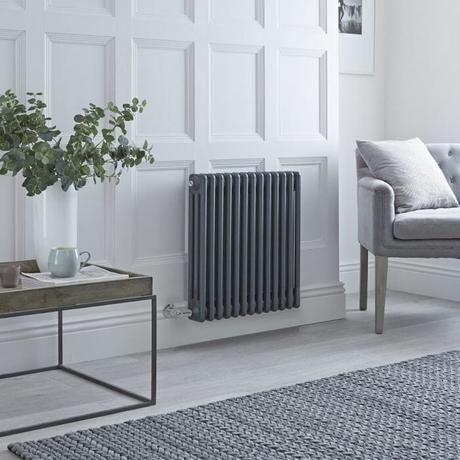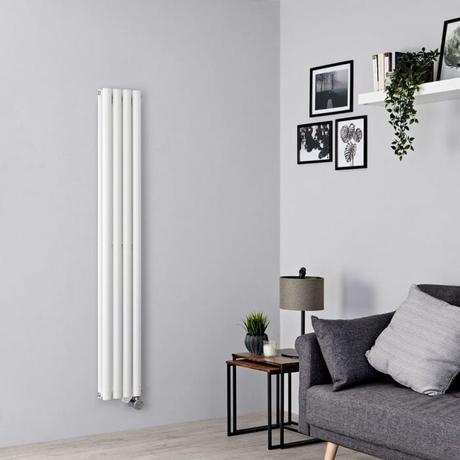UK Landlords are legally responsible to keep their rental property safe and fit for human habitation. This includes making sure all gas and electrical equipment is correctly installed, tested and maintained; heating the rental property to at least minimum standards; and ensuring that their properties meet a minimum energy performance rating of E on an Energy Performance Certificate (EPC).
Are you a landlord thinking about upgrading the heating system in your rental property? Or perhaps you’re confused as to whether your property complies with the new Minimum Energy Efficiency Standard (MEES) legislation?
Here we’ll explain UK landlords’ energy and heating obligations, plus reveal the perks of electric heating and radiators and how it will affect the energy efficiency of your rental property.

Landlords’ responsibilities when it comes to heating
So, what are landlords’ obligations when it comes to heating their rental properties? Here are the facts:
- Landlords are responsible for providing central heating or other equipment for heating each occupied room as well as a boiler for heating water
- The current minimum heating standard in the UK is at least 18°C in sleeping rooms, and 21°C in living rooms – but this is only when the temperature outside is -1°C. At these times, this minimum level of heating should be available at all times. This rule applies to residential properties and HMOs
- Landlords are responsible for all repairs and replacements required under the Landlord and Tenant Act (1985)
However, it is the tenant’s responsibility to report any issues related to heating or hot water to the landlord. The tenant/s also need to undertake daily, necessary maintenance of the property and use the facilities provided properly. Any damage caused by the “knowingly or by incorrectly using the equipment in the property will breach the tenancy agreement.” This will result in the tenant having to pay for the repairs directly or through their deposit
New energy efficiency rules for landlords
In addition to these responsibilities, as of April 1st 2019, new Minimum Energy Efficiency Standards came into effect in the private rented sector. Now, landlords in England and Wales, have a legal obligation to keep their rental properties warm and ensure their property is banded E or above on an Energy Performance Certificate.
Landlords with cold homes rated F or G (the bottom two bandings) will be forced to upgrade the energy efficiency by the government. Those who fail to upgrade their energy efficiency will have to pay up to £3,500 (including VAT) to improve the insulation and/or heating before they can rent out the property or issue a renewal of an existing tenancy agreement.
Tenants also have the right to request energy efficient improvements if they believe their property doesn’t meet the required standards.
Which type of electric heating solution should you use?
Asides from having legal obligations, becoming more energy efficient is something landlords – and tenants – are striving for. For a long time, gas was considered the cheapest way to heat a property. Rointe reports that it is the most common form of heating in UK homes, with around 8 million gas boilers sold every year in the UK. But electric heating is now gaining much momentum, evolving into a sustainable and economical alternative.
With the increase of tenants’ savviness and desire for energy efficiency, there is a noticeable increase in pressure on landlords to upgrade their properties with a contemporary and sustainable electric heating system. Here we’ll explain the different types of electric heating and their pros and cons.

Classic electric heating systems
Electric heating already existed in the form of some old school devices. One of the most popular electric heating devices is Economy 7 Storage Heater, also known as TA heater. However, the huge amount of kilowatts required to heat the bricks inside generated huge electrical bills. There are also panel heaters, which theoretically fare much better in terms of energy efficiency, but due to poor heat distribution, they usually end up as similarly energy-demanding as Economy 7 heaters.

Clay core heaters
Clay Core heaters represent the newest trend in electric heating, which are considerably more energy efficient compared to their predecessors. Their energy input is much lower and the power is used more efficiently. Heating elements of Clay Core heaters are also built-in to a much thinner frame, so they don’t require a long charge period. The heat is distributed in a much more effective way, thanks to the design and natural convection of the heater.
Another important factor is controllability. For example, Economy 7 Night storage heaters do not have much control over the distribution of the heat gathered overnight, which tends to be frustrating for tenants. Modern Clay Core heaters come with a full array of control methods.
If you’re not into the technology you can control your heating from simple dial controls on the side of the radiator. But if you are willing to control every aspect of the temperature in every room, Clay Core allows for the usage of apps that will let you control each individual heater or zone from your smartphone or PC.
Electric radiators vs convection and storage heaters
In order to efficiently rent out property, you need to make it attractive to potential tenants. There are many methods to improve your property – and one way is to invest in a good heating system. Properties heated by convection heaters or storage heaters may put off potential tenants. After all, they are designed to be backup heaters, therefore they don’t have the hard-wearing efficiency which is necessary for heating a whole property. Tenants will likely avoid places with convection heaters, assuming they will result in high energy bills.
On the other hand, storage heaters are made for permanent heating, but in these modern times they end up being inflexible and expensive. Today, the majority of tenants spend most of their time outside or at work which renders storage heaters obsolete and inefficient. Additionally, the increase of electrical appliances used during the day has made the Economy 7 tariff quite unpopular. Switching to electrical radiators will solve those problems.
First of all, you can control when the radiators will release heat, so you can programme them to accommodate your lifestyle. These radiators are much more energy effective and they are able to save energy even if you don’t use it during the Economy 7 tariff. The main reason for that is that they are heating both by radiation and convection.
Related: The best valves for traditional radiators

Electric radiators vs central heating
The popularity of gas central heating is caused by its familiarity since many of us have grown up next to a similar system. Unfortunately, the downsides of gas central heating are significant and numerous:
- The installation of a new gas heating system is time-consuming and expensive, which can delay moving new tenants in
- A central heating system requires high maintenance in order to be maintained safely. Neglecting regular check-ups can lead to malfunctions or even serious accidents
- Central heating is designed for whole-home use, so individual tenants have little to none control over the level of heating. In contrast to that, electrical radiators are remarkably easy to install, they are quite safe and they produce no carbon monoxide
Read more: The best heating radiator buying guide
Final thoughts
A growing number of landlords are choosing to install electric radiators as a primary heating system in their rental properties. They are easy to install, environmentally safe and low maintenance. Between the needs of landlords and tenants, electric radiators are the ideal compromise.
If you’re looking for high-quality electric heating solutions that guarantee easy installation, reliability and affordable running costs, check out our collection of electric radiators here.

